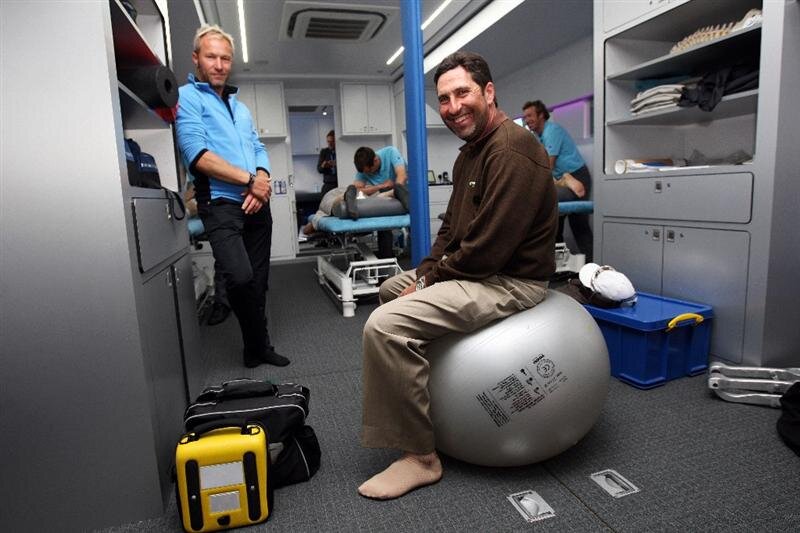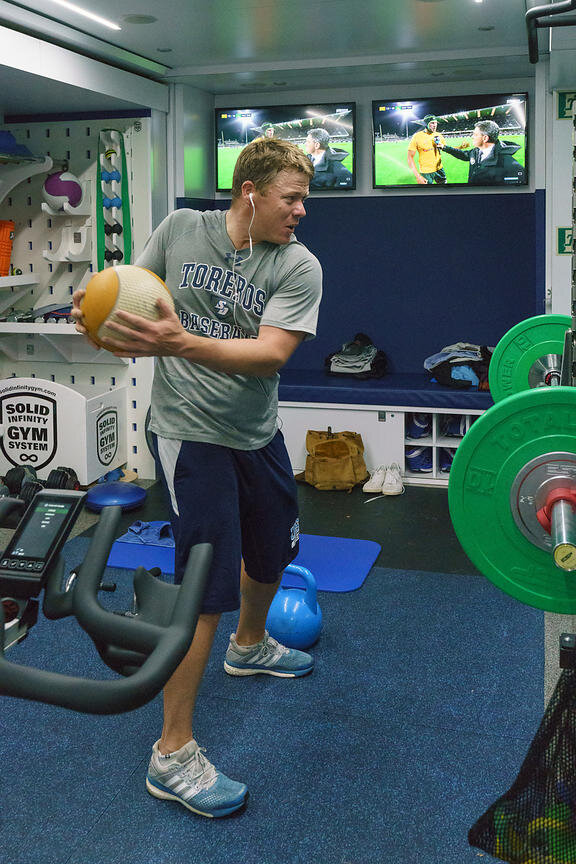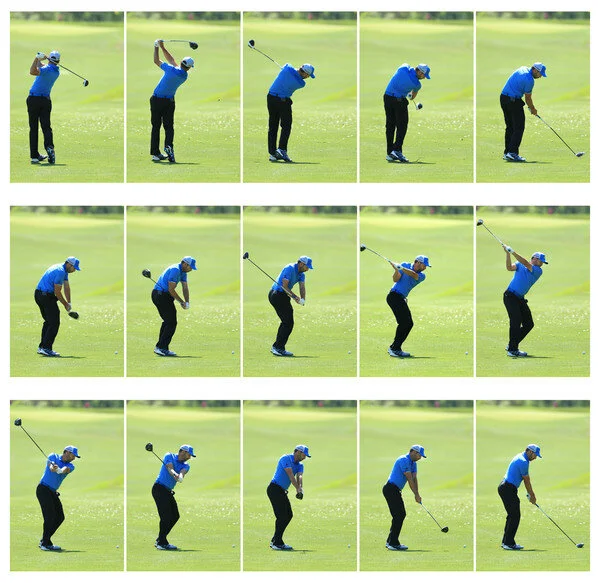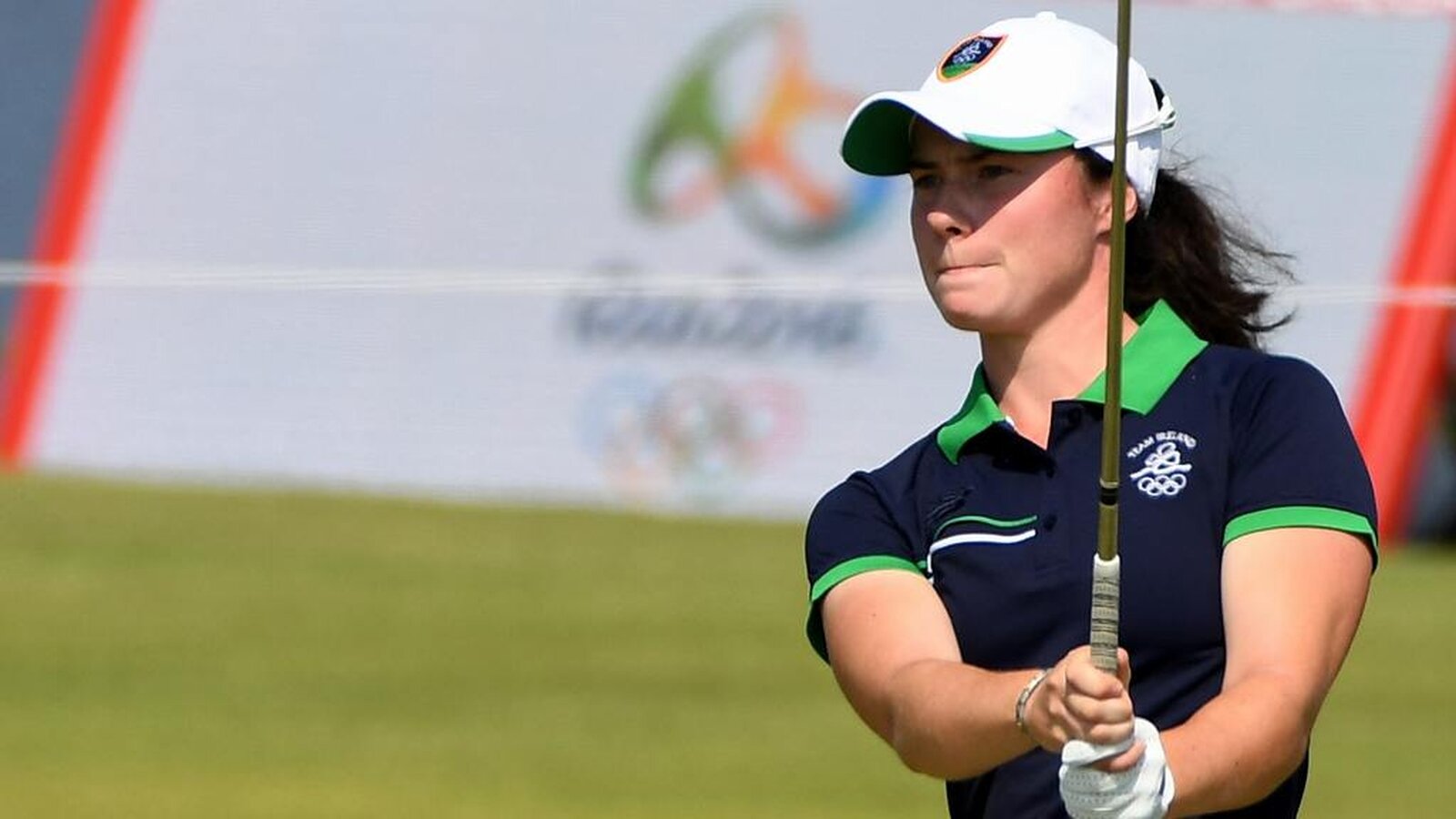Part 2 of Getting back to golf
Rotation
Rotation is another of the fundamental movements in golf. When we think of rotation we should think of both strength and mobility. The word “golf swing” in itself would suggest that rotation of the body during golf is inevitable and important. When we speak about rotation in golf we consider 3 keys areas: the shoulders, the hips and the spine. While each of the 3 areas are interlinked it is crucial to note the importance of being able to dissociate them also, rotating one but not rotating the other. Rotational mobility needs no equipment, does not take long to practice and can be practiced everyday as a maintenance, a rehab or a warm up exercise.
How does this translate to my swing?
Thoracic spine: Thoracic strength, or strength of the upper back, will directly correlate to your clubhead speed. Our thoracic spine is connected to our ribs and shoulders and the effect of reduced thoracic spine strength and mobility can have adverse effects on other such structures which is not good news for our golf swings! Stiffness of the thoracic spine correlate with overuse injuries at the elbow and wrist, that occur frequently enough to have an injury named after them (Golfer’s elbow)! Thoracic mobility should be integrated into your daily routine and your warm up, particularly if you are one to spend hours sitting at a desk each day.
Shoulder Rotation: Shoulder mobility has been discussed previously and if neglected we are reducing our backswing and consequently reducing the amount of force generated to hit the ball. “Keep your eye on the ball” is also a saying drilled into our brains from an early age but if we lack the thoracic or shoulder mobility then we often end up taking our eyes off the ball for a split second to achieve a greater backswing. It is these compensations that often lead us to injury.
Hip Rotation: The hip joint requires a lot of mobility to be able to withstand the large rotational forces through it during a golf swing. Consequently it is often exposed to injury or can be the source of another injury such as low back pain if it does not have adequate movement or strength. If lacking strength or mobility it can be one of the contributors to killing golf swing speed and can also be the cause of tight hamstrings and lower back pain as well as contributing to knee or ankle problems.
Push
A push pattern means exactly what it says on the tin. We are pushing an object/ weight or even our own body. We can do this with our lower limbs by pushing our feet off the ground (via a single leg step as shown), to jump or for our upper limbs by completing a chest press, or a press up. Both the push and pull pattern are primarily based around strength.
How will this translate to my swing?
The downward swing is where we generate power to create club head speed and it directly corelates with pushing force ability. Strength and conditioning has become a staple part of younger pro-golfers weekly routine and push movements are most certainly central to a golfer’s strength and conditioning programme. It is therefore unsurprising to see the likes of younger golfers such as Brooks Koepka and Rory McIlroy amongst the top drivers in the world. Whilst I cannot guarantee your play will resemble the likes of Rory or Brooks, I can safely inform you that the addition of a push exercise to your programme will have a positive outcome.
Pull
A pull pattern means that we are taking an object/weight which is away from us towards our body and for an upper limb exercise it requires the work of our upper back and shoulders. There is no doubt that it is important to have the strength in these areas and to do this we need to target some pull exercises. I would suggest perfecting a foundation of smooth and rhythmical scapular (shoulder blade) and thoracic (upper back) movement to obtain the full benefit of these strengthening exercises.
How does this translate back to my swing?
This one isn’t so straight forward to explain as during the golf swing the push factor prevails. The above example which you will recognise from Part 1 of our golfing series is a hip hinge which with resistance can be utilised as a pull pattern to improve lower limb strength. However, we cannot develop a push movement without a pull movement and so it is important to focus on the pull element to make you a balanced athlete. Regardless, completing pulling patterns will strengthen your shoulders and upper back muscles and can only benefit you in a positive way. Building strong and resilient backs and shoulders can mitigate the risk of back, shoulder and elbow injuries that we so often see in golfers.
Lunge
A forward lunge consists of stepping one leg forward while the contralateral leg flexes to almost touch the ground, all while maintaining an upright posture. To perform a forward lunge effectively requires sufficient foot, ankle, knee, hip and trunk stability. A lunge really tests our lower limb strength also and targets hamstrings, calves, glutes and our quadriceps muscles. Our trunk control is also greatly tested during a lunge. The great thing about lunges is that no equipment is needed to complete this basic exercise though the benefits are plentiful.
How does this translate back to my swing?
Aside from the obvious benefits of strengthening the lower limbs, a lunge can really test your trunk control. The trunk is the pillar for connecting your feet through to your hands that hold the club and hit the ball, so it goes without saying that it is important to become more stable and stronger through this area.
So what now?
There are further movements that will be assessed by your physiotherapist but mastering the fundamentals of movements patterns is a good place to start to improve your golf.
Do the movements often and do them well. I must clarify that I am by no means a golf coach, nor do I have the expertise to advise on the technical aspect of the game. It is part of my role to coach movement and any technical advice you receive should further complement the movement work you have chosen to undertake.
There is certainly no one size fits all approach so get a plan of movements that suit you. You have the opportunity to work on your mobility and conditioning where in normal circumstances regular golf can make them hard to focus on. When the time comes to return everything will be less conscious and more automatic, allowing you to focus on scoring as opposed to swinging.
Take home messages:
· Prepare your body for the load and demands you will place on it
· Not all conditioning programmes mean lifting weights
· Find a plan that suits – there is no one size fits all formula
· Educate yourself, implement a strategy, prevent an injury







